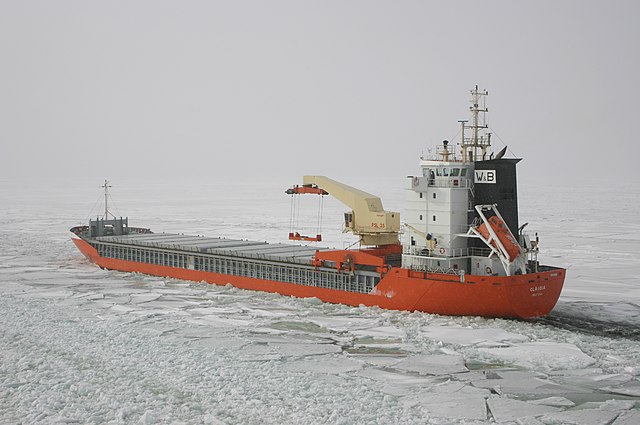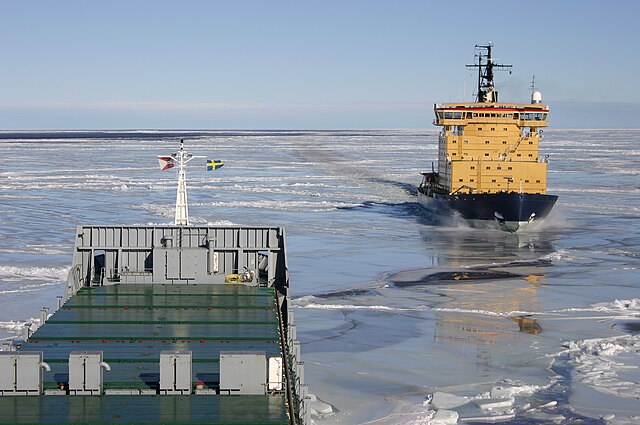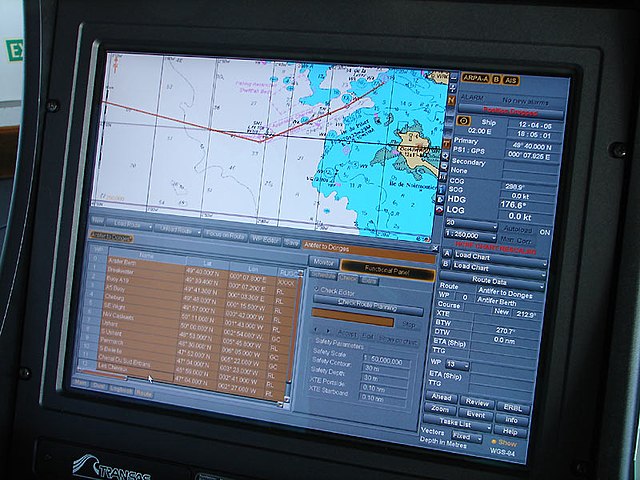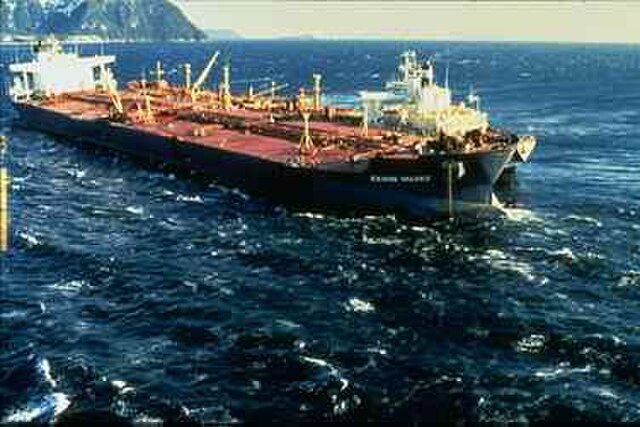Ice navigation is a specialist area of navigation involving the use of maritime skills to determine and monitor the position of ships in cold waters, where ice is a hazard to the safety of navigation. The presence of sea ice requires a ship to exercise caution, for example by avoiding icebergs, slowly sailing through a lead, or by working with an icebreaker to follow a course through the ice to a destination. Additionally ships must also deal with the extreme cold of the climate in regions such as the poles; this involves removal of ice accumulation from the ship, as well as protecting the crew from the elements while working on the deck. Ships and their crews operating in ice will follow established rules of seamanship, as well as complying with national and international regulations such as the Polar Code.
An example of ice navigation; Russian icebreaker Krasin leading an American supply ship into McMurdo Station, Antarctica
Cargo vessel Claudia navigating in ice, Gulf of Bothnia
Icebreaker Ymer assisting cargovessel Vlieborg
Navigation is a field of study that focuses on the process of monitoring and controlling the movement of a craft or vehicle from one place to another. The field of navigation includes four general categories: land navigation, marine navigation, aeronautic navigation, and space navigation.
A navigation system on an oil tanker
Manual navigation through Dutch airspace
Radar ranges and bearings can be used to determine a position.
Poor passage planning and deviation from the plan can lead to groundings, ship damage and cargo loss.







